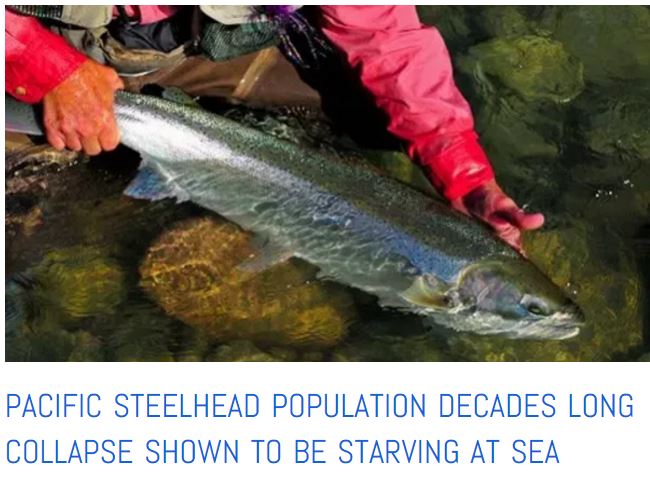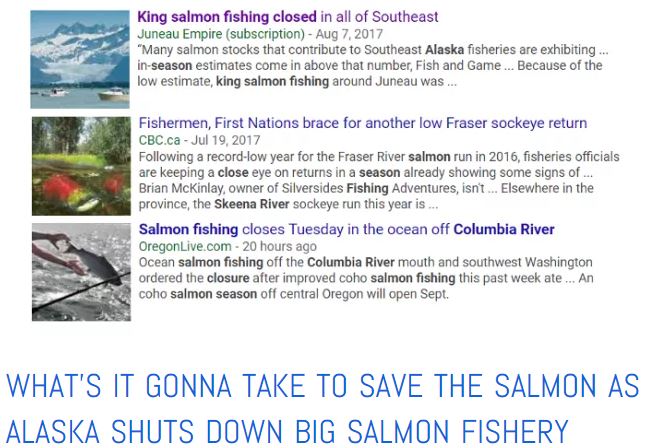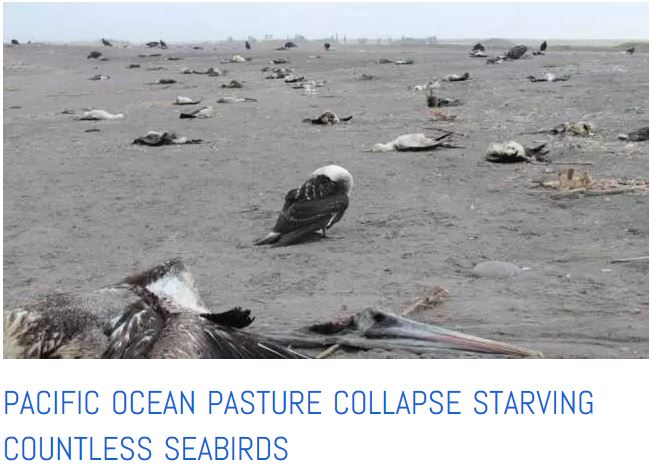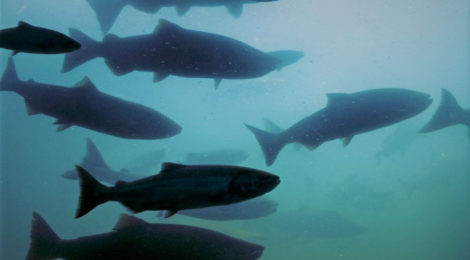
Fish Nearing Extinction As They No Longer Can Live On The FAT Of The Seas
Collapse of ocean fish pastures and ocean ‘lean times’ sen as starvation of salmon and steelhead but some fish are worse off than others
Endangered Spring Salmon and Summer Steelhead genetic makeup is tuned to storing 30% more fat than their fall migrating cousins.
Civil and Native fisheries authorities call for the fish to be placed under endangered species protection.
A better idea is to restore their ocean pastures to historic health and abundance so that the fish can be in condition to keep their kind from extinction.
A team of researchers at the University of California, Davis led by Dr. Michael Miller, published a report in the journal Science Advances that ought to have sweeping ramifications for salmon fisheries management from California to Alaska. The scientists the have identified a fundamental genetic difference between Chinook (or King) salmon that migrate into rivers in the spring versus the fall and similarly in the Summer Steelhead.
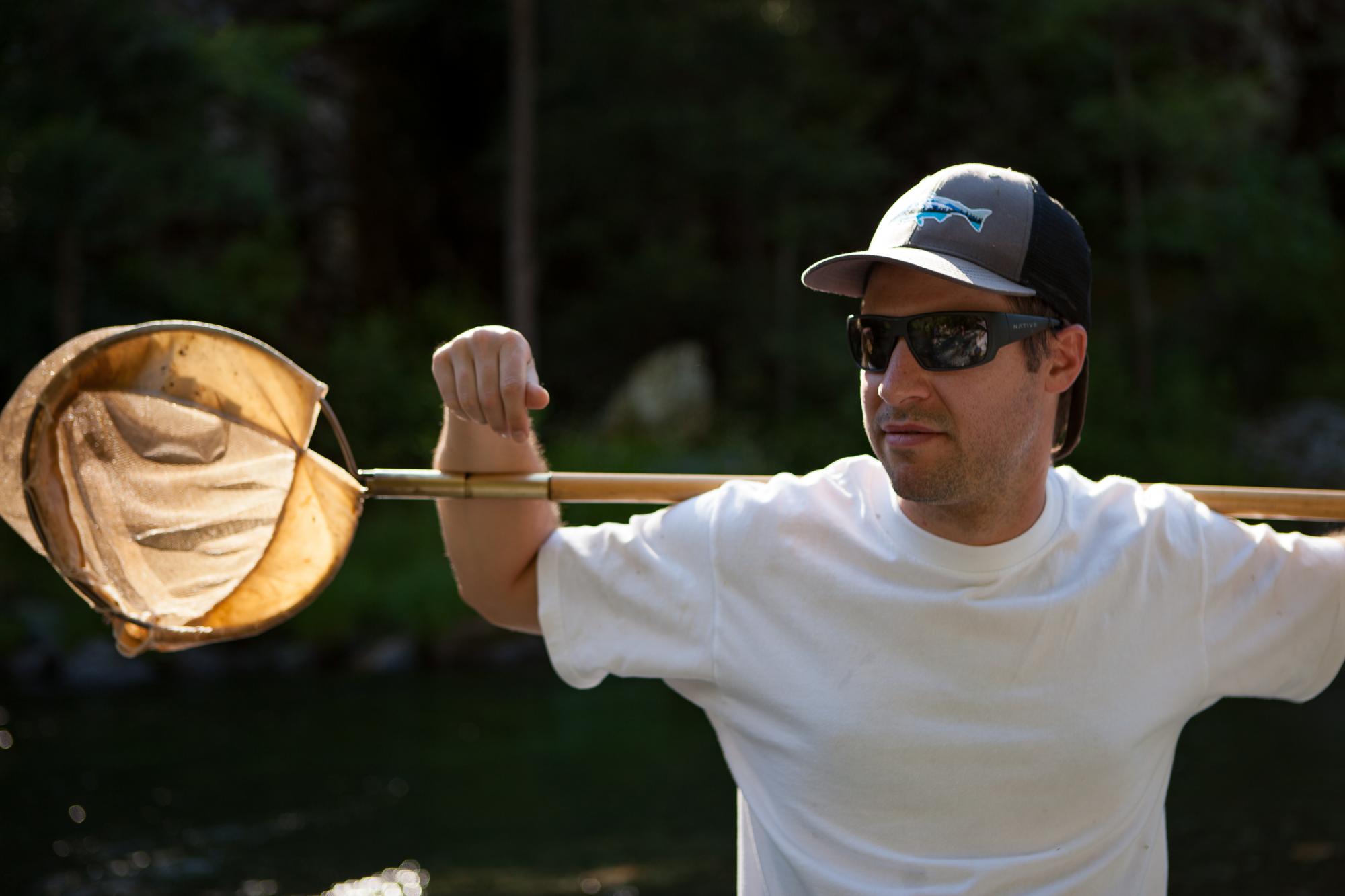
UC Davis professor Mike Miller developed a DNA analysis method that shows the genetic difference in Chinook salmon and Steelhead trout. (Mikal Jakubal photo)
The research provides new insights into salmon evolution and reveals that spring Chinook salmon and Summer Steelhead deserve to be treated as their own distinct species similar but distinctly separate from fall run Chinook and Steelhead. Today both these unique fish are nearly extinct throughout much of their historic range.
The report has led the Karuk Tribe to start the process to place spring Chinook in the Klamath River on the Endangered Species List. The Klamath River flows from southeastern Oregon to California’s north coast and is one of three rivers that power the West Coast commercial salmon fleet. Klamath spring Chinook were specifically used in Miller’s study.
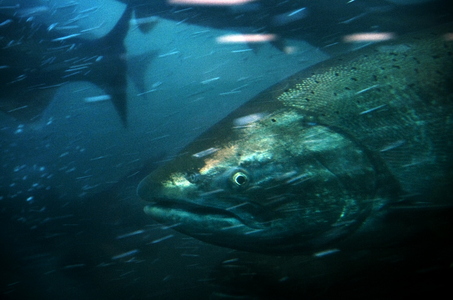
Spring Chinook Salmon
Spring Chinook (and summer steelhead) enter rivers in the spring when snow melt swells rivers allowing the fish travel into the upper reaches of a watershed. But they can’t spawn until the fall and so they must reside in cold water areas through spring and summer, living on fat supplies. The upper reaches of the rivers and streams have far too little food to sustain these very large fish.
After living on their vital fat stores for as much as 6 months after leaving the oceans they will have become very lean and following the fall spawning and die completing their circle of life. Their cousins the Fall Chinook (and winter steelhead) migrate into rivers in the fall spending only days to a few weeks in the lower reaches of their rivers and streams where they then spawn. Steelhead don’t die following spawning but swim back to sea to feed.
“Having two life strategies allow Chinook to take advantage of the entire watershed instead of just the upper or lower reaches,” explains Toz Soto, Senior Fisheries Biologist for the Karuk Tribe. “This behavioral diversity enhances the chances of long term survival for the entire population.”
Stop blaming the damn Dams!
The conventional and popular fisheries wisdom/dogma is that dams are the big problem for the ‘Spings’ and ‘Steelies’. But while the dams may be a factor in those watersheds that have dams that simple ‘politically popular’ explanation does not explain the uniform collapse of the Spring Chinook and Winter Steelhead everywhere including watersheds without dams or significant environmental degradation.
A far more foundational and reasonable ecological cause of the extinction threat to these fish is the crisis being reported of the collapse of the food chain on the common North Pacific ocean pasture of these, and indeed a vast array of disappearing ocean life, is the better explanation for the crisis facing these especially vulnerable and special fish.
Click any of the above to read more.
FATNESS is part of life in the ocean, think of whales, walrus, and now Spring Salmon
Miller’s research shows that the difference between spring and fall run Chinook is a small change in a single gene. This change has occurred only once in Chinook’s evolutionary history which means that if we lose spring Chinook (and winter steelhead), we can’t expect them to re-appear for millions of years.
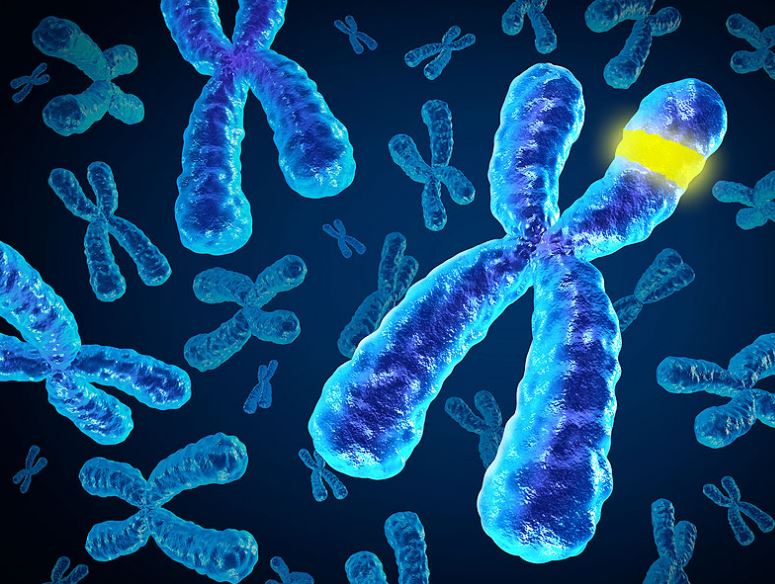
Just one gene, the one that lets a fish grow fat is the key.
Miller’s findings contrast with the previously held notion that salmon populations evolved the spring run behavior many times over across watersheds. If that were true, it would mean that the spring run behavior is relatively easily for Chinook to develop.
In the past, federal agencies have declined to add spring Chinook to the Endangered Species List for this very reason. This new finding will be a powerful case to force agencies to reconsider their stance.
The genetic difference in the fish is in a gene called Greb1L which has been shown to play a role in fat metabolism. This makes sense to anyone who has eaten these fish. You can taste the difference. Springs have a long way to swim before reaching their spawning grounds so they enter the river full of body fat which is why they taste so good. The Spring/Summer fish typically have 30% more body fat than fall migrating cousins.
The population of Chinook salmon that swims up the Klamath River in the spring once numbered in the hundreds of thousands. In a recent survey, divers at the Salmon River Cooperative Spring Chinook and Summer Steelhead Population Snorkel Survey only found 110 Spring-run Chinook, which is the second lowest return in over 20 years since the counts started.
“We have known all along that fall Chinook and spring Chinook, or ishyaȃt, are a distinct species,” says Karuk Natural Resources Director Leaf Hillman. “It’s about time western science catches up to traditional wisdom since that’s what is needed to make the policy changes necessary to save this part of our culture.”
The politics of salmon is a powerful force in the Pacific Northwest
As a result of salmon politics in 2020 work will begin on what will be hundreds of millions of dollars to be spent on the removal of the four dams on the Klamath River. The project will be the largest dam removal project in US history. It is likely to be just as fruitless (save for the thousands of workers carrying our the deconstruction) as the $16 billion spent in the nearby Columbia River on salmon protection and restoration work over the past 20 years. In spite of those billions spent the runs of salmon while helped briefly have returned to being the lowest numbers in history.
The great tragedy of this damn dam removal zeal is that the real problem and the solution can be addressed for less than 1% of the cost of dam removal, but of course that’s the point isn’t it….to spend as much government money as possible…create great big feeding troughs for all to partake of, all but the fish that is.
Both the starving at sea problem and the solution are now well proven.
The ocean salmon pastures are in a continuing state of collapse as evidenced by both the scarcity of the salmon again this year and by the abundance seen in many stocks in the years following a remarkable effort in 2012 when the North Pacific salmon pastures were intentionally and effectively restored bringing record catches of salmon into the nets and onto the plates of people from Alaska to Oregon.
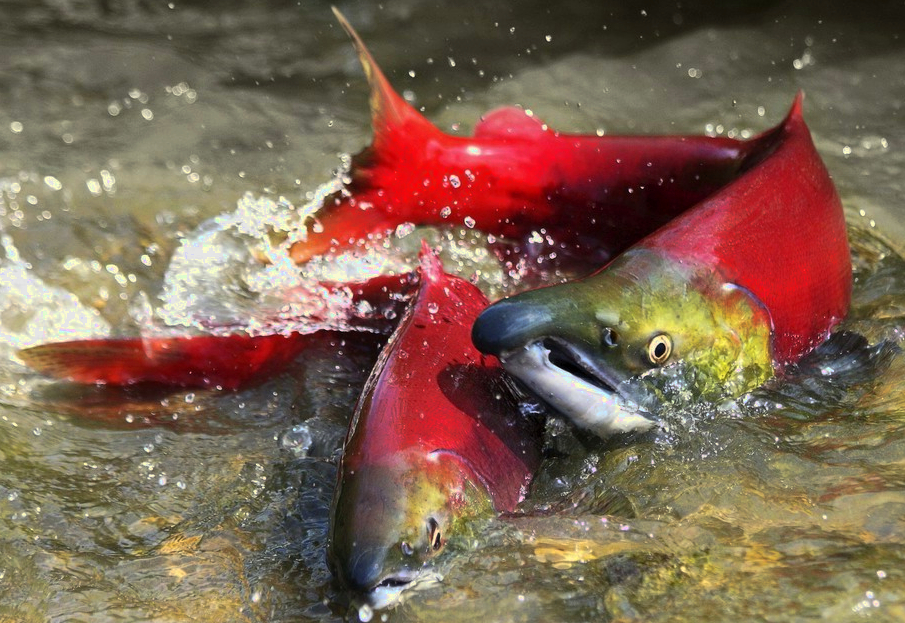
Sockeye Salmon
Recent banner years for salmon in Alaska, British Columbia, and the Columbia River watershed have been no accident of Nature. That the Fish Came Back was the direct result of a long and carefully pilot project to prove that ocean fish pastures that are dying and becoming ever clearer, bluer, lifeless deserts can be immediately restored to historic health and abundance.
That work was done by me, in a project developed with the participation of the Canadian federal government via its National Research Council, Ministry of Indian and Northern Affairs, National Science and Engineering Research Council, Canadian Space Agency, the Canadian Science and Economic Development organization and many other ministries of the federal and provincial government as well as international science and industry development agencies.
The return of ten times the number of Columbia River Sockeye salmon to Osoyoos Lake 400,000 instead of this years 40,000 was precisely as was expected was just a small part of the story. The 20+ million Sockeye in the Fraser River in 2014 compared with the barely 1 million expected this year was a good result. But our big fish story took place in Alaska in the very region struggling now with emergency orders closing down salmon fisheries.
Bring Back The Fish
In 2013 precisely in perfect timing with the restoration of the Alaska Pink Salmon pasture, which just happens to be shared as the Southern Sockeye pasture the fish came back in staggering numbers. Instead of the 50 million Pinks that were expected to be caught 226 million were caught and the fishing only stopped because there was no more room in any fish processing handling facility to put another single fish.
My 2012 ocean pasture replenishment and restoration work in the NE Pacific returned the ocean to life as seen in the largest catch of salmon in all of history in Alaska the next year. Click to read more
A great tragedy of this story is that the almost exclusive whiteman’s salmon science cabal could not, and to this day, will not stomach any salmon science that comes from outside their tightly defended cliques. After all their salmon biology business is BIG business. In the Columbia River system alone over the past 20 years $16 billion dollarshas been lavished on so called salmon programs that were supposed to but have utterly failed to bring back the fish.
That a tiny native people village and one ‘out of the box’ ocean ecologist (me) might Bring Back The Fish in historic health and abundance over in thousands of miles of rivers and streams for a mere few million dollars in private money has been met with absolute horror by the Salmon Environmental Industrial Complex. Just where those $16 billions went, and that’s just a fraction of the whole, no one can really say, or shall we say the ‘accounting is nothing short of fishy.’
The pundits may pose a billion reasons why there is no better, faster, cheaper way to BRING BACK THE FISH but the fish have spoken and hundreds of millions of salmon can’t be wrong. Indeed dust for the oceans bring back the fish whether that dusting comes from natural volcanoes or with the good intentions good shepherding of the ocean pastures by the hand of man.
Alas the tiny village project was destroyed by the evil cabal and that too is a fact and today the salmon are missing and shown to be returning to our rivers and streams in the lowest numbers in all of history.
You can read everywhere on this blog the full story of the the hope, the horror, and still the hope that we can and so we must Bring Back The Fish.
Join Me.









